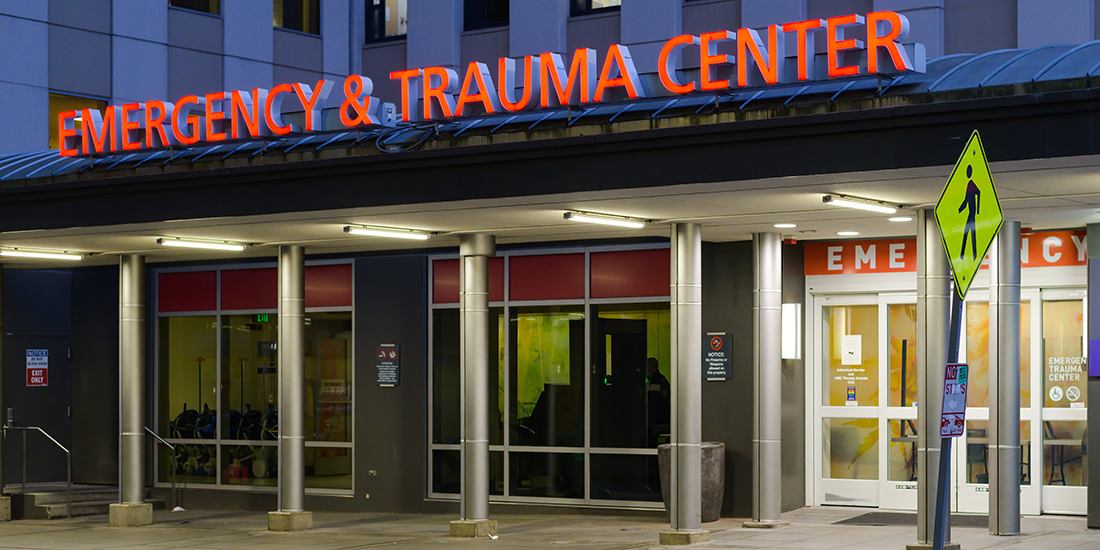The concept of specialty referral centers – i.e., hospitals that specialize in the treatment of particular types of illness or injury – started in the 1970s with trauma and burn centers. These hospitals have the specialized staff, equipment, and procedures needed to improve the chances for survival and future lives of the patients suffering from those particular illnesses or injuries.
In the years since the introduction of the trauma and burn centers, numerous other specialty-center programs have been established – to help stroke victims, for example, patients in need of cardiac care or suffering from venomous bites, and/or stricken by other life-threatening illnesses or injuries. In addition, many systems are in place to assemble the equipment and staff needed to treat specific needs of patients in response to the advance information received from an ambulance at the scene of an accident or during transportation to the hospital.
Transportation decisions, however – which often are used to determine which hospital a patient should be taken to – become more complicated as hospitals themselves continue to specialize. Typically, an EMT (emergency medical technician) or paramedic makes the transportation decision based on his or her diagnostic evaluation of the illness or injury of the patient. Specific types of injuries frequently suggest that transportation to a trauma center is advisable – because of the concern about hidden internal injuries, for example – even in the absence of visible signs or symptoms of injury. Thanks to those well informed decisions, patients usually are given the most effective care available by hospitals that specialize in the specific illnesses or injuries indicated by the on-site and/or en-route evaluations.
However, the transport of a patient from one hospital to another hospital better able to care for the patient costs both time and money. The transport of a critically injured patient to another hospital is particularly expensive, of course, but the transport of critically injured patients to the wrong hospital also costs lives.
Costs, Capabilities, and Added Complexities
As the current national discussion on controlling medical costs intensifies, the issue of how destination decisions are made becomes increasingly important in controlling both the cost of EMS evaluations and the long-term care provided to patients. Improving such decisions is contingent on improving the ability to determine the specialized services likely to be needed – and, therefore, transportation to the most appropriate facility. There are two components of this improvement: staff knowledge and training; and the equipment available. Clearly, any future advances in diagnostic equipment must be accompanied and/or immediately followed by additional knowledge and training not only in the mechanical workings of the equipment but also in the interpretation of the data it produces.
A good example to use for this discussion is blunt trauma to the abdomen – the type of injury frequently suffered in a car wreck. For many years, the decision to transport accident patients to a trauma center was based on a list of criteria derived from historical records and patient outcomes – a rollover accident, for example, or an accident in which another passenger had died on the scene.
There are now a number of programs that use ultrasound technology, in the field, to diagnose vascular or abdominal injuries from trauma. An ultrasound system allows the EMS professional to peer deeper into the patient’s vital systems and, by doing so, creates the ability to determine whether the patient needs immediate transportation to a trauma center or whether the patient can be evaluated just as well at a community hospital. Future data studies will determine if the ultrasound devices improve the accuracy of the destination decision for trauma patients or are no more accurate than the decisions currently made by paramedics using a standard list of criteria and their own unaided senses.
Patient outcomes from more effective transport decisions also can be affected, of course, by such seemingly insignificant “reminder” aids as a check-off list or decision tree – or as complex as advanced cardiograms, which 20 years ago were cutting-edge technology but are now standard care on a paramedic unit. In short, the future of EMS should and undoubtedly will be characterized by more knowledgeable and better trained staff, equipped with even better and more sophisticated systems and technologies that, in combination, will ensure that patients can be taken directly to a facility that provides the specific care they need.

Joseph Cahill
Joseph Cahill is the director of medicolegal investigations for the Massachusetts Office of the Chief Medical Examiner. He previously served as exercise and training coordinator for the Massachusetts Department of Public Health and as emergency planner in the Westchester County (N.Y.) Office of Emergency Management. He also served for five years as citywide advanced life support (ALS) coordinator for the FDNY – Bureau of EMS. Before that, he was the department’s Division 6 ALS coordinator, covering the South Bronx and Harlem. He also served on the faculty of the Westchester County Community College’s paramedic program and has been a frequent guest lecturer for the U.S. Secret Service, the FDNY EMS Academy, and Montefiore Hospital.
- Joseph Cahillhttps://domesticpreparedness.com/author/joseph-cahill
- Joseph Cahillhttps://domesticpreparedness.com/author/joseph-cahill
- Joseph Cahillhttps://domesticpreparedness.com/author/joseph-cahill
- Joseph Cahillhttps://domesticpreparedness.com/author/joseph-cahill






